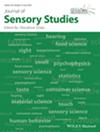Comparison of volatile aroma and sensory characteristics of doenjang and Korean-style doenjang
Abstract
Doenjang is a traditional soybean fermented food ingredient in Korea. According to the Korean Food Code, different categories were defined: doenjang and Korean-style (Hansik) doenjang. Two different categories were classified according to its main ingredient called “Meju.” The purpose of this study was to compare the flavor characteristics including sensory characteristics and volatile aroma profiles of doenjang and Korean-style doenjang according to the categories listed in the Korean Food Code. A total of six samples, including four doenjang and two Korean-style doenjang samples, were included in this study. Sensory characteristics were analyzed by a highly trained panel (n = 7) using Spectrum™ method. Volatile flavor analysis was conducted using gas chromatography–mass spectrometry in conjunction with the Solvent Assisted Flavor Extraction method. Differences in sensory characteristics were documented between doenjang and Korean-style doenjang categories, and one sample under doenjang category had distinctive aroma characteristics. Samples under doenjang were characterized with high intensities of fruit-related aroma, possibly due to the presence of ester compounds, ethyl acetate, and phenyl ethyl alcohol. Korean-style doenjang had characteristics related to the so-called “traditional doenjang” in previous studies, such as meju and fish sauce aromatics, and these aromas may have been caused by the presence of 1,2-dimethyl benzene and 3-hydroxy-2-butanone.
Practical Applications
According to the Korean Food Code, doenjang is divided into two categories based on the use of major ingredients called meju: doenjang and Korean-style doenjang. To this date, studies related to flavor analysis of doenjang majorly focused on the final product, doenjang, while this study was conducted on the flavor analysis of doenjang categorized by the Korean Food Code. Finding from this study can aid small and mid-sized doenjang manufacturers to strategically manage their flavor characteristics according to Korean food law and regulations.

 求助内容:
求助内容: 应助结果提醒方式:
应助结果提醒方式:


